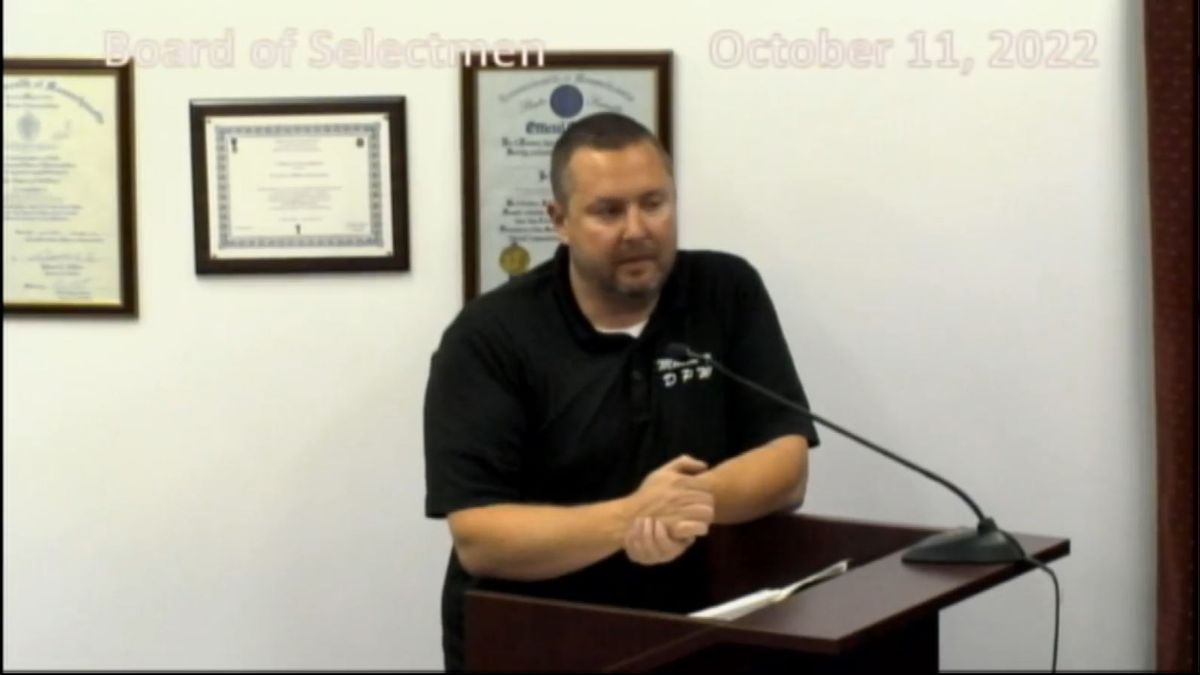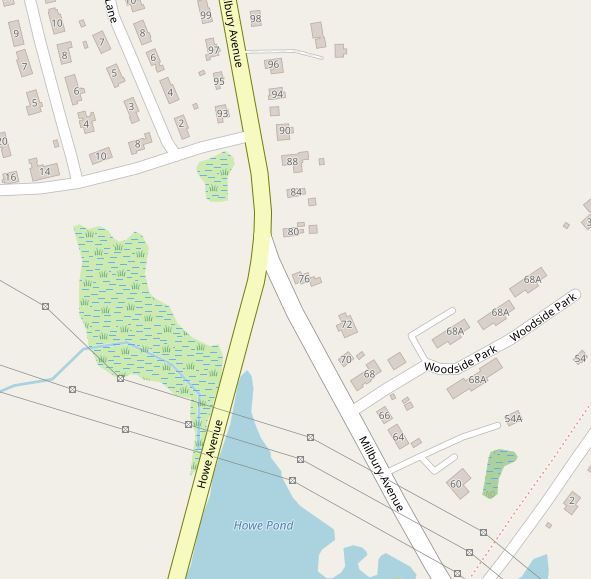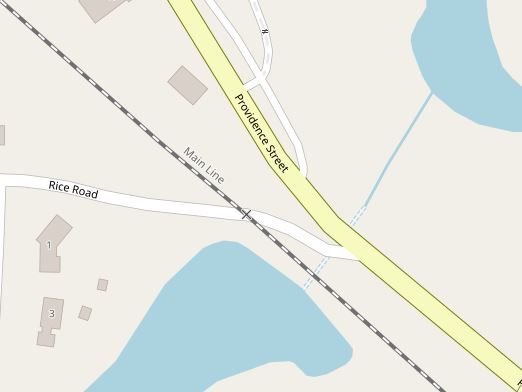Board of Selectmen Consider 40B, 40U, but Yield on Howe and Millbury Ave Changes

NOTE: Founding Editor Chris Naff is a member of the Board of Selectmen. Naff has no editorial input on Board of Selectmen news or information in regard to the Bramanville Tribune.
The Board of Selectmen held a meeting on October 11, 2022. Mary Krumsiek, Scott Despres, Katie McKenna, and Chris Naff were present, and Dave Delaney absent.
Chief of Police Brian Lewos spoke about Millbury Avenue and Howe Avenue and a proposed yield sign at the end of Howe. He has been approached by residents and there have been a number of accidents since the paving and repainting. Currently, Howe Avenue traffic has the right of way, and this would keep traffic more consistent with the way the roads are situated.

Chris Naff asked whether there was a consideration to the actual traffic patterns, Keith Caruso responded that there were a number of considerations, and the best option they came to was a yield sign on Howe coming toward Millbury Avenue. Town Manager Sean Hendricks noted that a goal is also to slow down traffic, and a yield is a concession to the fact that more traffic comes from the Howe Side. Katie McKenna questioned why a repaving would change traffic patterns so much; Caruso noted that the darker pavement means people are simply driving as opposed to yielding.
Naff recommended a study before making a change. Hendricks asked why it was such a big deal, arguing that people are already going too fast on Howe, and McKenna noted that it's decades of conditioning that needs to be unlearned. Caruso insisted that this is the least impactful option.
After further discussion, Naff again requested a study and recommended that changes like this be brought forward before a decision is made.
Krumsiek accelerated the discussion on Rice Road and the 40B Local Initiative Program (LIP) proposal. There have been meetings with the developer. Hendricks provided the agreement on video, which laid out the plan and the responsibilities under a 40B project. Hendricks reiterated that the state considers affordable housing departments as "very, very important," and that 40B allows developers to go directly to the state and are approved with little-to-no consideration to town zoning and needs.
Hendricks noted that a lot was done by the Planning Board already. The terms and conditions negotiated by the Planning Board regarding commitments are in place as part of the agreement, with some highlights. One, for example, is the widening of Rice Road, and the agreement works to minimize the impact on existing improvements - as the new pavement widened the road, there is no need for additional road takings and the request was already fulfilled.

Hendricks noted three questionable conditions: widening Providence Street, flattening the curve onto Rice, and re-doing the lines on Providence Road. With Providence Road and the curve in particular, much of the land is owned by National Grid and would be a difficult taking. Another option on the curve would be to change the right turn, but that land is owned by C. K. Smith and would be similarly difficult. A 90 degree right hand turn, in addition, would be difficult due to the elevation and the rail. Discussion continued around the way to make the plan viable for the town, the developer, and the Planning Board.
"We can impose these conditions," Hendricks said, "but we may have some issues with accomplishing them."
Hendricks noted that there is nothing in the agreement about the railroad improvements. He highlighted the potential of a cul de sac, that would solve the issue of a rail crossing entirely, but would limit access to Rice Road only to South Main Street. Hendricks was unsure of the least bad option for this issue.
The Planning Board also sought a sidewalk as part of the development. He noted the difficulty given a stone wall nearby, but favors more walkability. The developer does not see the sidewalk as critical, and it will be up to the town to discuss. Scott Despres noted that the road was widened and he wasn't sure where a sidewalk would end up, and that creates an additional concern.
In addition, eminent domain would be a difficult sell. Providence Street is technically a state road, and the Department of Transportation would likely have some input. Hendricks recommended to the Board of Selectmen that the town forego the Providence Street conditions with that in mind. Naff asked, if the developer was amenable to changes at Providence Road and those are discarded, whether the town could get something else instead to address the safety considerations.
McKenna asked whether there was any consideration to downsizing. Krumsiek asked as part of the meetings, and the developer is not willing to move on the size of the project. Krumsiek noted that the developer could simply walk away at any point and go straight to the Zoning Board of Appeals.
Despres reminded the Board that they cannot relitigate the project, only negotiate its impact. He noted that getting money from the developer is better for the developer than getting them to pay for the sidewalk, and that the proposed LIP agreement also earmarks money for Windle Field, which has nothing to do with Rice Road.
Naff expressed concern that the developer will walk away from the LIP if we ask for too much, and Krumsiek said that there might be one more shot to negotiate. She noted that she has reached out to our federal representation for additional railroad situation.
Later in the meeting, Steve Stearns spoke. He argued that the road should be 32 feet of width given the size of the project. Krumsiek noted that, being a 40B project, it may not matter what the zoning says. Stearns also noted that the residents of the area would be opposed to a cul de sac.
Other topics discussed:
- Terry Burke Dotson again raised a concern about the municipal parking lot during "Citizen's Speak." She requested that the Board of Selectmen hold a separate meeting to discuss the municipal lot and make some changes. Mary Krumsiek said it might be a good idea. Dotson also argued that the town should issue a cease and desist to halt construction.
- Starting November 1, the transfer station can no longer take mattresses to burn at Wheelabrator. The state has a series of regulations in place that will make it difficult to dispose of dirty mattresses, more to come. For residents, after November 1, clean mattress removal from the most affordable company (Tuff Stuff) would cost $40, which encompasses the cost to the town. A second vendor, Green Mattresses, may accept the rejected mattresses for an additional fee. Discussion circled around what Green Mattresses would actually take, and Caruso is waiting on information. Despres asked how often mattresses are disposed of, and Caruso said there were nearly 40 last month.
- The Board of Selectmen approved early voting times for the fall elections. Jayne Daviolo, Town Clerk, noted that mail voters will have two ballots to fill out for races and the four ballot questions. There will also be a ballot drop box outside of Town Hall.
- The Board of Selectmen closed the Special Town Meeting warrant, scheduled the reviews of the Police Chief and Town Manager, scheduled the remainder of the Board of Selectmen meetings through the rest of the term, and submitted the Multifamily Moratorium Amendment to the Planning Board for a public hearing pursuant to state law.
- Discussion was ongoing regarding the grant acceptance policy. Topics included whether it's worth having two policies (one for federal, one for state/local) or one (for any grants).
- The Board of Selectmen voted to authorize the Town Manager to enter a Community Host Agreement with Wonderland Cannabis Company (1, 2). Discussion centered on how impact fees work under current state law. Despres asked what impact fees Hendricks believed could be assessed, and Hendricks noted that there has been no impact on town resources with Nature's Remedy and the location of Wonderland means that increased traffic is largely accounted for due to the Shoppes at Blackstone Valley.
- Discussion about Massachusetts General Law 40U centered around whether or not Millbury actually accepted it. Town counsel believes we did, the Board of Selectmen were not so sure. The topic was an article at the 2017 Annual Town Meeting, but may have been indefinitely postponed by then-Town Manager David Marciello.
- Hendricks gave a quick management update. Staffing is improving, blasting for the Fire Headquarters is coming soon, and the town is nearly set on an assistant town planner. Hendricks also noted that the state budget included line items for the Millbury Police Department, which will help fund the purchase of a drone and other items. Finally, he shared a letter of praise for Keith Caruso from Steve Stearns. Jeff Raymond (who was attending the meeting for this publication) noted that the budget request was not only for a drone, but for bola wraps and license plate readers and requested that asks like this get more oversight.
The meeting adjourned at 9:02pm.
Comments ()